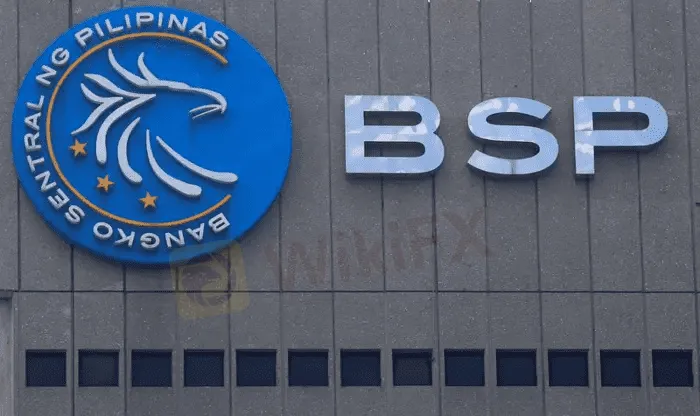简体中文
繁體中文
English
Pусский
日本語
ภาษาไทย
Tiếng Việt
Bahasa Indonesia
Español
हिन्दी
Filippiiniläinen
Français
Deutsch
Português
Türkçe
한국어
العربية
Philippine central bank hastens interest rate rise, ready for more action
Abstract:The Philippine central bank on Thursday raised its benchmark interest rates by 75 basis points in a surprise off-cycle move, and signalled its readiness to take further policy action to contain broadening inflationary pressures, its governor said.

The Philippine central bank raised its key interest rates by 75 basis points in a surprise move on Thursday and kept the door open for further tightening as it rushed to contain broadening inflationary pressure and rescue a faltering peso.
Implemented outside the regular policy-meeting cycle, the tightening move was the most aggressive by the Bangko Sentral ng Pilipinas (BSP) since the central bank shifted to an inflation-targetting approach in 2002.
The rise in interest rates accompanied policy shifts effected by other central banks in Asia and elsewhere on Wednesday and Thursday. They included one in Singapore that was also an off-cycle move.
In the Philippines, the rate on the key overnight reverse repurchase facility rose to 3.25%, BSP Governor Felipe Medalla said in a statement.
“In raising the policy interest rate anew, the Monetary Board recognized that a significant further tightening of monetary policy was warranted by signs of sustained and broadening price pressures amid the ongoing normalization of monetary policy settings,” Medalla said.
The rates on the BSPs overnight deposit and lending facilities were also raised by 75 basis points, to 2.75% and 3.75%, respectively.
No such move was expected on Thursday because the BSP did not have a regular policy meeting scheduled until Aug. 18. The central bank previously raised interest rates by 25 basis points in May and again in June.
Medalla said the BSP would still hold the Aug. 18 meeting, and policy moves remained data-dependent.
Inflation surged to the highest level in nearly four years in June, and is widely expected to remain elevated, pushing the full-year average beyond the target band of 2% to 4%.
Finance Secretary Benjamin Diokno said the economy remained robust and could thus absorb Thursdays interest rate rise. It would remain supported by the easing of COVID-19 restrictions and structural reforms, he added.
Peso recovers
The Philippine peso, which had hit a record low early this week versus the U.S. dollar, recovered some lost ground and was last up 0.3%.
The peso is the worst-performing currency in Southeast Asia this year as the greenback continues to strengthen on expectations for faster Federal Reserve policy tightening.
The Fed is seen stepping up its tightening campaign with a supersized 100 basis point rate hike this month after a report showed inflation racing at four-decade highs.
The BSPs move was meant to support or at least stabilise the peso exchange rate, said Michael Ricafort, economist at Rizal Commercial Banking Corp in Manila.
A weak peso adds further pressure on inflation, threatening to derail recovery of the consumption-driven domestic economy.

Disclaimer:
The views in this article only represent the author's personal views, and do not constitute investment advice on this platform. This platform does not guarantee the accuracy, completeness and timeliness of the information in the article, and will not be liable for any loss caused by the use of or reliance on the information in the article.
Read more

Top Forex Brokers for Low-Cost Trading in 2025
Find the best Forex brokers for 2025 with low spreads, zero commissions, and no hidden fees. Simplify your trading journey with insights and the WikiFX app!

Participate Now in ForexCup Trading Championship
FXOpen announced the trading competition called ForexCup Trading Championship 2025 for traders. You can join, trade, and compete for exciting prizes. Here are the details

What the Movie Margin Call Taught Traders About Risk and Timing
The 2011 film Margin Call offers a gripping portrayal of the early hours of the 2008 financial crisis, set within a Wall Street investment firm. While the film is a fictionalised account, its lessons resonate strongly with traders and finance professionals. For one trader, watching the film had a lasting impact, shaping how they approached risk, decision-making, and the harsh realities of the financial world.

Why More Traders Are Turning to Proprietary Firms for Success
Over the past decade, one particular avenue has gained significant popularity: proprietary trading, or prop trading. As more traders seek to maximize their earning potential while managing risk, many are turning to proprietary firms for the resources, capital, and opportunities they offer. In this article, we’ll explore why an increasing number of traders are choosing proprietary trading firms as their preferred platform for success.
WikiFX Broker
Latest News
Fake ‘cyber fraud online complaint’ website Exposed!
Day Trading Guide: Key Considerations
NAGA Launches CryptoX: Zero Fees, 24/7 Crypto Trading
Scam Alert: 7 Brokers You Need to Avoid
AvaTrade Launches Advanced Automated Trading Tools AvaSocial and DupliTrade
What Determines Currency Prices?
Why More Traders Are Turning to Proprietary Firms for Success
How to Use an Economic Calendar in Forex Trading
MC Markets Review 2025
T4Trade Enhances Forex Trading with Advanced Tools for 2025
Currency Calculator


